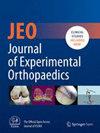To develop and validate a short and mini version of the ALR-RSI (Ankle Ligament Reconstruction-Return to Sport after Injury) scale.
The ALR-RSI scale contains 12 items and was administered to 109 patients following arthroscopic anatomical lateral ankle reconstruction. The short (6-item) and mini (3-item) versions were developed using a systematic selection process to eliminate items based on their category, mean, standard deviation and pertinence. A second group of 75 patients participated in an analysis to validate the predictive value of these scores. These patients filled out all three ALR-RSI versions 6 months after arthroscopic anatomical reconstruction of the lateral ankle to determine the predictive value for the return to sport (RTS) at 12 months. The predictive value was evaluated with receiver operating characteristic curves (area under the curve [AUC]).
The long version of the ALR-RSI had a high internal consistency (Cronbach's α = 0.97), suggesting redundancy of certain items. A short version of 6 items was developed (Cronbach's α = 0.94). A mini version of 3 items was also developed which retained one key item from each category. Factorial analysis confirmed that only one factor explained 76% of the total variance in the mini version (Cronbach's α = 0.89). The scores of the three versions were higher in patients who returned to sport at the same pre-injury level of play or better (p < 0.0001). Both versions were found to have a good predictive value for the RTS at 12 months, with comparable AUC values (full version AUC 0.70 [95% confidence interval; CI, 0.57–0.83]; short version AUC 0.72 [95% CI, 0.59–0.84]); mini version, AUC 0.73 [95% CI, 0.61–0.85].
The shorter versions (6 and 3 items) of the ALR-RSI may be used to predict the RTS at the pre-injury level without affecting the psychometric characteristics of the long score.
Level II prospective cohort study.



